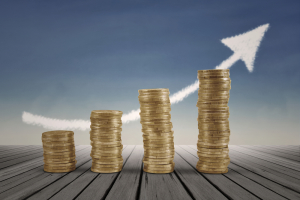
MANILA – The Philippine gross domestic product grew 7 percent in the second quarter of the year, Socioeconomic Planning Secretary Ernesto Pernia announced Thursday, making the Philippines the fastest growing economy in the region.
Pernia told a news conference in Davao City the growth is “an upbeat start” for the new administration of Philippine President Rodrigo Duterte, saying investments had the highest contribution to the growth followed by industry.
“The growth is within market expectations, given average consensus forecast of 6.1 to 7.2 percent for the second quarter,” Pernia told a news conference in Davao City.
He added, “This strong growth increases the probability of our attaining the revised full-year 2016 real growth projection of 6 to 7 percent.”
With the first semester GDP growth of 6.9 percent, the economy will need to grow by at least 5.1 percent in the second half of the year to attain at least the low-end of the growth target, he said.
“While it is normal to see a slowdown in the second semester during election years, the smooth transition of power and assurance of macroeconomic policy consistency and continuity by the new administration will likely keep business and consumer confidence strong to meet the full year target,” Pernia said.
Pernia said investments had the highest contribution of 5.7 percentage points to GDP growth.
“Investments on durable equipment registered an increase of 42. 8 percent and private sector investments in construction, which grew to 8.3 percent from 8.1 percent in the first quarter. This growth was driven by stronger business confidence, low interest rates, and strong performance of the construction sector,” he said.
He said public spending remained strong, driven by the boom in public construction and government consumption, which grew by 27.8 percent and 13.5 percent, respectively.
Similarly, he said private consumption grew stronger in comparison to the previous quarter and year due to the low inflation and interest rates, improved labor market conditions, and steady consumer confidence.
“Overall, domestic demand growth accelerated to 12.3 percent from 12.0 percent in the first quarter of 2016,” he said.
In contrast, Pernia said external demand weakened further, as exports of goods and services continue to slow down to 6.6 percent, despite the 15.3 percent growth of services exports.
Conversely, he said imports of goods rose to 22.9 percent largely due to increased purchases of captal goods and durable, which indicate an increase of investments from firms.
“Services imports remained strong at 13.3 percent, significantly higher than the 10.3 percent in the previous quarter,” he said.
On the supply side, Pernia said the acceleration of economic growth was “fairly broad-based,” adding the high growth recorded for the first quarter of this year was driven by gains in the industry and services sectors.
He said the industry sector recorded a growth of 6.9 percent, which is higher than the 6.1 percent growth in the previous year, supported by manufacturing, construction, and utilities.
He added that the services sector recorded an 8.4 percent growth fuelled by faster growth in trade, transport communication, public administration and real estate, renting and business activities.
In contrast to the robust industry and services, Pernia said the performance of the agriculture sector remains dismal at -2.1 percent due to the lingering effects of El Nino. He voiced concern over “a developing risk of La Nina” that will likely intensify between August and October this year.
“This highlights the urgency of crafting holistic agriculture development policies that include disaster resiliency. This will benefit workers form the sector, which employs the biggest chunk of our labor force,” he warned.
He further warned that despite the good numbers for the first six months of 2016, there is still a risk of seeing a lower growth rate in the second half of the year. “This is a normal occurrence during election years. Consumer sentiment will also likely normalize given the post-election season.” he said.
Over the medium-term, Pernia said the new administration is aiming still for a steady acceleration of growth towards 7 to 8 percent this year.
“This will be supported by sustained reforms, including a comprehensive tax reform, sustained investment in infrastructure, easing of restriction of foreign investments, reduction of cost of doing business and strengthening of agro-industrial linkages,” he said.